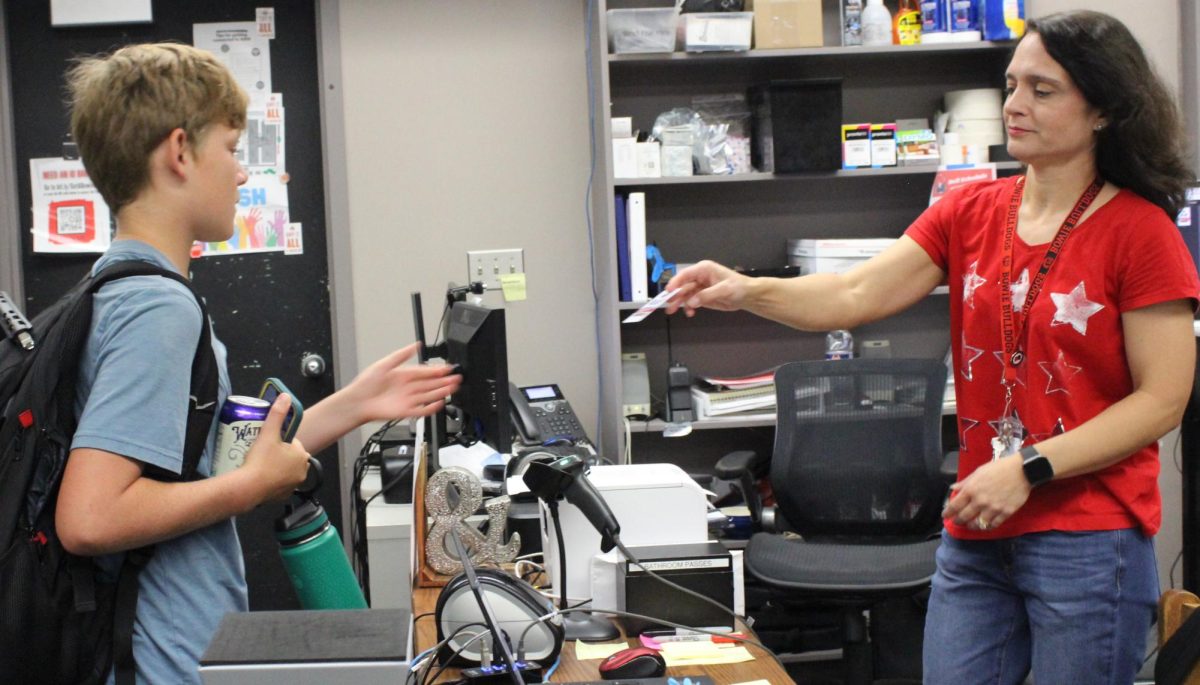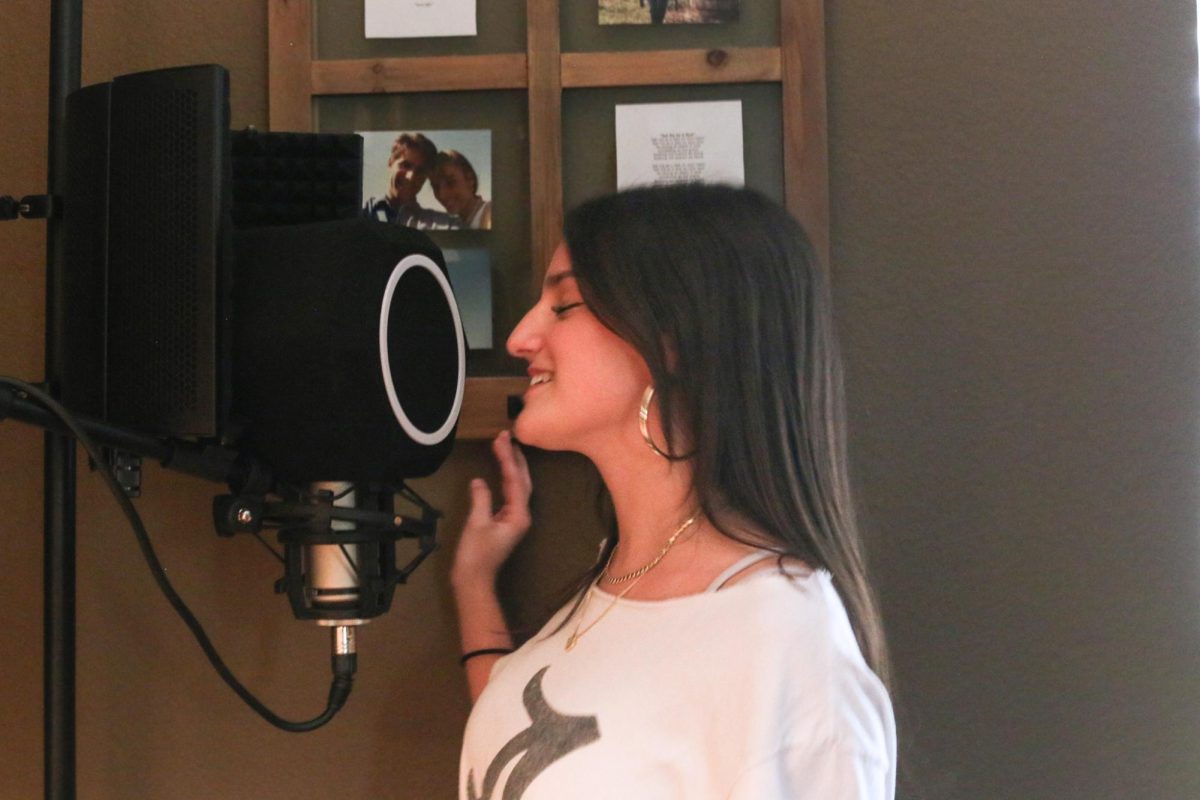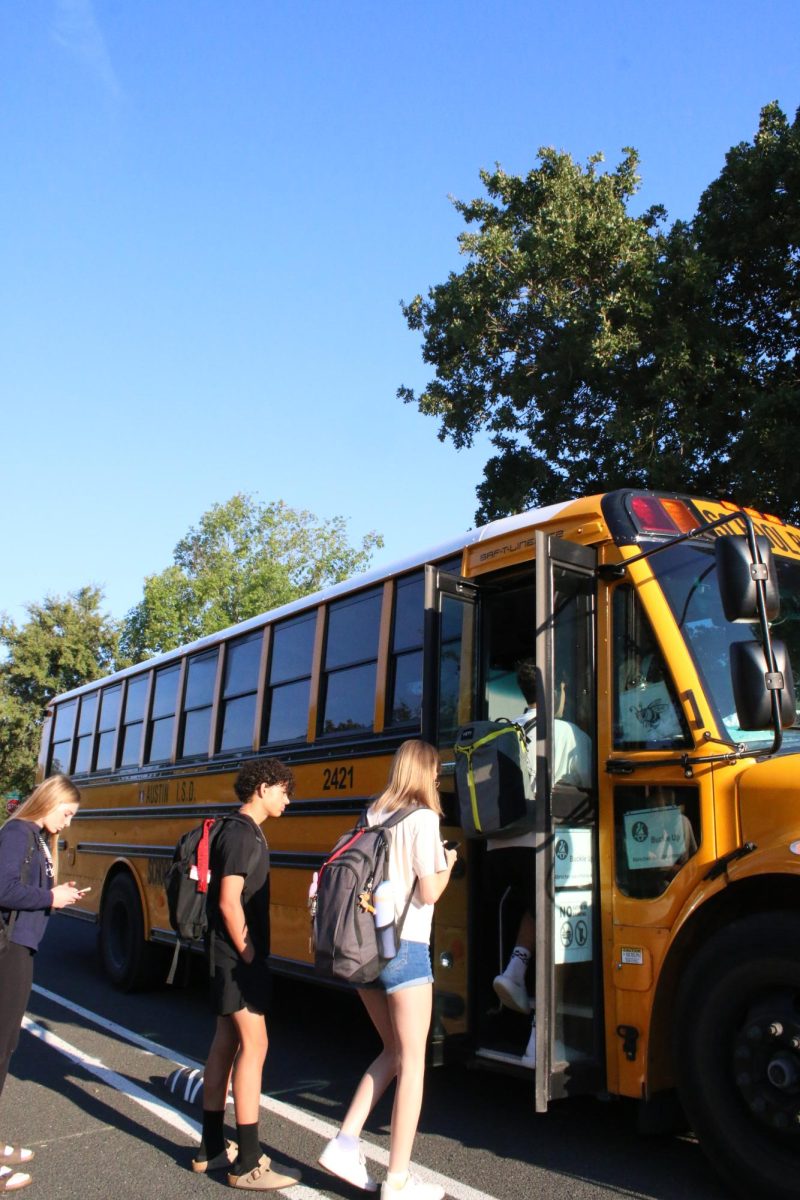The Bowie ID policy has faced changes this school year. Similar to last year, students are still required to wear their IDs while they’re on campus at all times. However, starting this year, there have been QR codes placed in all classrooms that are linked to School Cash Online. Students can use this website to purchase a replacement sticker ID (for $1) or a plastic ID ($5). The ID will then be brought to the student’s classroom from the book room in A107, so that they don’t miss any class time or instruction. Last year, there was an issue with students wandering around campus after they were sent to the office for an ID, so the QR codes were put in classrooms to help keep students in class.
The old policy frustrated teachers, because they were required to send students without IDs to the office for a replacement. On occasion, the students would take too long, and miss important instruction that was essential to the lesson. Teachers brought this to administration’s attention, until they updated the policy and made the appropriate changes to respond to staff’s needs. This meant putting QR codes into the classrooms to accommodate the loss of class time.
“A lot of teachers were complaining, ‘Hey, have you have you seen this kid? I sent him for an ID.’And it was just continuous and it was just too much of a disruption,” Assistant Principal Hector Munoz said. “Our understanding was, you will tell us you need the ID you’re gonna stay in class, you’re not going to lose this instruction, this learning, and we’ll bring it to you, so that way, there’s no kids wandering around. We identified the teacher’s need and students are to remain in class, learning.”
Students are asked to wear their IDs when on campus as an extra safety measure. IDs are meant to identify everyone on campus and their purpose here. If every student and staff member are displaying their ID, then it is very obvious who is and who isn’t meant to be on school property.
“We have a lot of exits and entrances to this campus, architecturally it was built to feel open for everyone,” English teacher Megan Holden said. “Which is great, except now it’s open to everyone, and we need to be able to see at a glance who does belong and who doesn’t belong here.”
IDs aren’t only being used to identify who is and who is not meant to be on campus: they are also being used to identify students who have had medical issues and are unable to answer questions. If this student is wearing their ID, it can help staff find out who that student is, and contact their guardians or other emergency contacts as needed.
“A lot of students, staff, parents, and community members don’t realize how many medical events occur on this campus. It can be a seizure,” Munoz said. “Many health issues happen, and the fact is the first thing we do is try to identify the kid. So as soon as we identify the student, then we can make communication with their parents.”
Many students are reluctant to wear their IDs, even though teachers and staff are constantly reminding students to put them on. This has been noticed by many adults and staff on campus, and they’re grateful to the students that continue to wear their IDs.
“I obviously remind kids when they come in to make sure to wear their IDs appropriately, like we’re supposed to, and I sometimes feel like I’m a broken record,” Front Office Clerk Venessa Kimball said. “But I keep doing it with a smile on my face, and I thank the students that come into the office with IDs on, because I appreciate those students that are making everybody’s job a little easier and keeping themselves safe.”
Students have noticed that security on campus, regarding those who come and go, is not very strict. A portion of students think that IDs don’t restrict entrances as much as they should.
“The staff lets students slide,” sophomore Aria McBroom said. “For example, you can walk out of campus and get back in so easily without an ID. I don’t think they care enough.”
Several students only feel obligated to wear their IDs if it is required by a teacher, otherwise they’ll just leave it in their backpack.
“I don’t really need it for most of my classes,” sophomore Abby Evington said. “If they ask for my ID, I just pull it out of my bag.”
Something that could help is all teachers on campus requiring IDs, or IDs needing to be visible on the student’s body at all times prior to entering campus.
“The answer is for every adult on campus to be consistent,” said Holden. “And for no teacher to let a student leave their classroom without checking for an ID.”
Following the threats made at the beginning of the school year, campus admin have been stricter on enforcing the new ID policy. Despite their initial frustrations with the policy, many students have recognized its positive impact on campus safety.
“They have started enforcing IDs at the front doors of campus, which helps make the school safer,” sophomore Genevieve Casas said. “It’s pretty annoying and frustrating having to deal with it in the morning, but in the end it does help the campus be safer. It’s good to know that when people arrive on campus in the morning they’re all supposed to be there, but as the school day progresses everyone takes them off. So, at some point they don’t really make an impact, but the admin is making an effort to enforce them, and I think that helps create a safer campus.”














